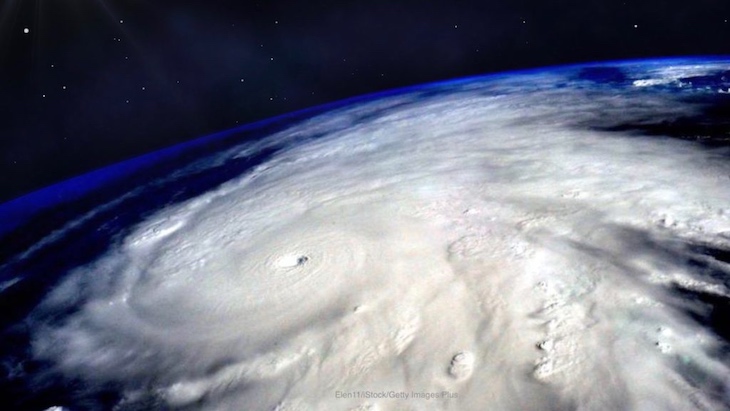With the first named Atlantic hurricane approaching the U.S. mainland, the USDA is offering food safety tips during hurricanes and severe storms. The best thing to do is to be prepared before storms hit. And this advice applies to all Americans, not just those who live in hurricane-prone areas.

First, make sure that you keep an appliance thermometer in your refrigerator and freezer. The freezer must be kept at 0°F or below, and the refrigerator between 33°F and 40°F to slow down most bacterial growth.
Then, freeze containers of water for ice to help keep food frozen in the freezer or cold in the fridge or in coolers if the power goes out. Make more ice cubes too. You can also use this ice for drinking water if flooding occurs and you need a clean source of water. Freeze refrigerated foods such as leftovers, milk, and fresh meat and poultry to keep them at a safe temperature longer.
Dry ice is the best way to keep foods frozen outside of a freezer. Know where you can buy it if necessary, and make sure you know how to handle it safely. And keep insulated coolers on hand to use if the power will be out for more than four hours.
During the storm, keep the fridge and freezer and coolers closed as much as possible. This helps maintain a safe cold temperature. Every time the door opens, the appliance has to work harder to reduce the temperature. A fridge without power will keep food safe for four hours if the door isn’t opened. And a full freezer can hold its temperature for about 48 hours (24 hours if it is only half full) as long as the lid or door is not opened.
After the storm, check the thermometers in your appliances to see if they are at safe temps. If not, discard food in your refrigerator. Do NOT taste food to see if it’s safe. Pathogenic bacteria that can make you sick do not change the taste, aroma, texture, or appearance of food. You can refreeze food if it still has ice crystals or is at 40°F or below. You can check the temp of each food package before you decide to throw or refreeze it. Clean the temperature probe with soap and water between each check. When in doubt, throw it out!
If any food has been exposed to flood waters, do not eat it. Throw away any exposed food that is not in a waterproof container. Containers that aren’t waterproof include those with screw-caps, snap lids, pull tops, crimped caps, cardboard juice/milk/baby formula boxes, and home canned foods.
Thoroughly wash all kitchen utensils, pots, pans, and dishes with soap and water that have touched flood water, then sanitize them by boiling them in clean water or putting them in to a mild bleach solution for 15 minutes. Rinse well and dry.
Safe and clean drinking water is a prime concern and one of the main points of food safety tips during hurricanes and severe storms. Buy bottled water before the storm and store it high up on shelves. Use only bottled water that hasn’t been exposed to flood waters. If you don’t have bottled water after a flood, boil it to make it safe, then filter it through clean cloth. You can disinfect water using household bleach, but that won’t kill all pathogens. Follow directions at the USDA web site.
Finally, check out that USDA web page to see a chart for when to save food and when to throw it out. Be prepared and stay vigilant and use these food safety tips during hurricanes and severe storms to keep your family healthy.




